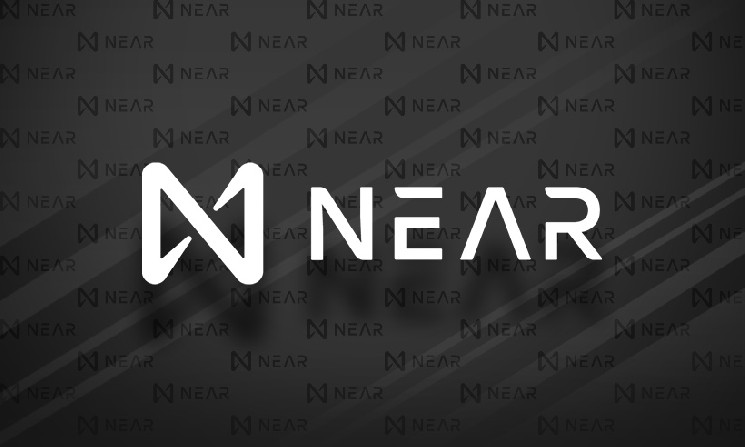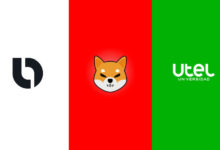An Introduction to the Near Protocol: What is it and How Does it Work?

If you want to create decentralized apps, the solution may be Near Protocol. This software encourages a network of computers to operate as a platform for developers. As a consequence, creating and releasing their own decentralized application is straightforward. You’ll discover everything you need to know about Near Protocol in this guide.
What is Near Protocol?
Near Protocol is a blockchain protocol created to improve the performance and fees associated with Ethereum. It uses sharding in order to make its blockchain more scalable. This process essentially allows the network to be divided into multiple subnetworks, each of which can process transactions in parallel. As a result, the overall network can handle more transactions without being bogged down.
In addition to sharding, Near Protocol also uses something called «state sharding». This means that every machine on the network only stores a portion of the data (or «state»). By doing this, it becomes unnecessary for each machine to store the entire blockchain history. Not only does this make the network more scalable, but it also makes it more secure since there would be no single point of failure.
Origin of Near
The idea for the Protocol originated in early 2017 when co-founders Alex Skidanov and Illia Polosukhin were working on scaling solutions for Ethereum. They quickly realized the existing blockchain protocols were not well equipped to handle large-scale applications due to slow performance and expensive fees.
After nearly two years of research and development, Near Protocol was finally launched in April 2019. The Protocol is powered by the NEAR token, which is used to pay for transaction fees and gas costs.
The team behind Near Protocol has set out to create a more efficient and user-friendly protocol than Ethereum. So far, they seem to be succeeding in their endeavor as the Protocol has processed over 1 million transactions.
How Does Near Protocol Work?
Now that we know a bit about the background of Near Protocol, let’s dive into how it works.
The first thing to note is that Near Protocol is designed to be developer-friendly. In order to make this happen, the team behind Near created the NEAR Shell. This tool allows developers to interact with the blockchain in order to deploy and test their decentralized applications. In addition, NEAR Shell also provides developers with access to various templates and examples. As a result, getting started with Near Protocol is relatively simple.
In terms of consensus, Near Protocol uses «Proof-of-Stake». Under this system, those who hold NEAR tokens can stake them in order to become validators. Validators are responsible for verifying transactions and maintaining the blockchain. In return for their efforts, they receive a portion of the rewards generated by transaction fees.
It’s also worth mentioning that Near Protocol uses sharding in order to make its blockchain more scalable. This process essentially allows the network to be divided into multiple subnetworks, each of which can process transactions in parallel. As a result, the overall network can handle more transactions without being bogged down.
In addition to sharding, Near Protocol also uses something called «state sharding». This means that every machine on the network only stores a portion of the data (or «state»). By doing this, it becomes unnecessary for each machine to store the entire blockchain history. Not only does this make the network more scalable, but it also makes it more secure since there would be no single point of failure.
Projects Based on Near
The Near Protocol team has been working on the project since 2017 and launched the mainnet in April 2020. Since then, a number of projects have been built on top of the Near Protocol network. Some of these projects include:
Waltonchain: Waltonchain is a blockchain platform that combines RFID technology with blockchain to create an efficient supply chain management system.
NearShore: NearShore is a decentralized application platform built on Near Protocol. It allows developers to deploy and manage their dApps quickly. NearShore also provides a number of helpful toolkits and libraries to make dApp development easier.
Status: Status is a mobile Ethereum client that allows users to access dApps on the go. The client also features an integrated messenger, wallet, and browser. Status is planning to integrate with Near Protocol in the future to allow users to access Near dApps.
Celer Network: Celer Network is a layer-2 scaling solution that enables fast, easy, and secure off-chain transactions. Celer Network plans to integrate with Near Protocol to enable near-instant transactions on the Celer Network.
NEAR Token
The NEAR token is the native token of the Near Protocol, and it is used to pay for transaction fees, gas, staking, and other services on the network. The total supply of NEAR tokens is 1 billion, and the tokens are distributed as follows:
60% of NEAR tokens are allocated for community growth & ecosystem development.
20% of NEAR tokens are allocated for stakers (validators and delegators).
15% of NEAR tokens are allocated to the NEAR Foundation.
5% of NEAR tokens are allocated for the protocol developers.
The NEAR Foundation has a four-year vesting schedule for its tokens, with 25% of the tokens being released yearly.
NEAR’s token economics are designed to incentivize all participants in the network — from developers building apps to everyday users accessing those apps — to help the network grow and thrive.
Fees: NEAR charges very low transaction fees compared to other blockchains, making it more affordable for developers to build apps on the platform.
Rewards: NEAR offers rewards for staking and participating in consensus, providing an incentive for users to help secure and grow the network.
Pros & Cons
Pros
NEAR is designed to be scalable from the ground up. This means it can handle many transactions per second (tps) without any issues.
The team behind Near Protocol is experienced and has a strong track record. They have worked on projects like Ethereum, Filecoin, and IPFS.
The project is backed by a number of big names in the crypto space, including Andreessen Horowitz, Polychain Capital, and Electric Capital.
NEAR Protocol uses sharding to improve scalability. This means that transactions are processed in parallel, which leads to improved performance.
The project is still in its early stages, which means there is a lot of growth potential.
Cons
There is a lot of competition in the scalability space, making it difficult for NEAR to gain traction.
NEAR Protocol uses sharding, which could lead to some security issues.
The team behind Near Protocol has not been very active on social media, making it challenging to build a community around the project.
Conclusion
Near Protocol is a great addition to the blockchain space. It offers many features that make it unique and attractive to users. Overall, Near Protocol is a great project with massive potential. We hope to see more development and adoption in the future.






 Bitcoin
Bitcoin  Ethereum
Ethereum  Tether
Tether  USDC
USDC  TRON
TRON  Dogecoin
Dogecoin  Cardano
Cardano  Bitcoin Cash
Bitcoin Cash  Chainlink
Chainlink  LEO Token
LEO Token  Stellar
Stellar  Zcash
Zcash  Monero
Monero  Litecoin
Litecoin  Hedera
Hedera  Dai
Dai  Cronos
Cronos  OKB
OKB  Tether Gold
Tether Gold  Ethereum Classic
Ethereum Classic  KuCoin
KuCoin  Gate
Gate  Algorand
Algorand  Cosmos Hub
Cosmos Hub  VeChain
VeChain  Dash
Dash  Tezos
Tezos  Stacks
Stacks  TrueUSD
TrueUSD  IOTA
IOTA  Basic Attention
Basic Attention  Decred
Decred  Theta Network
Theta Network  NEO
NEO  Qtum
Qtum  Synthetix
Synthetix  Ravencoin
Ravencoin  0x Protocol
0x Protocol  DigiByte
DigiByte  Zilliqa
Zilliqa  Nano
Nano  Holo
Holo  Numeraire
Numeraire  Siacoin
Siacoin  Waves
Waves  Ontology
Ontology  Enjin Coin
Enjin Coin  Status
Status  BUSD
BUSD  Hive
Hive  Pax Dollar
Pax Dollar  Lisk
Lisk  Steem
Steem  Huobi
Huobi  NEM
NEM  OMG Network
OMG Network  Bitcoin Gold
Bitcoin Gold  Augur
Augur  Ren
Ren  Bitcoin Diamond
Bitcoin Diamond